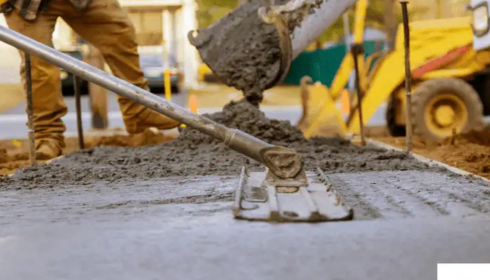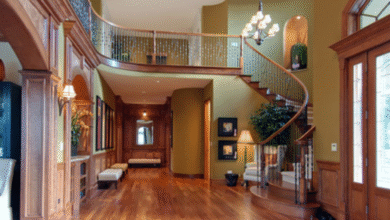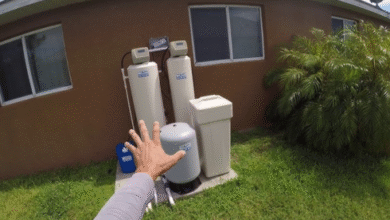From Cracks to Craftsmanship: Why Concrete Deserves a Second Look

You probably don’t think much about the concrete beneath your feet—until it cracks, crumbles, or makes that annoying uneven thud when you roll your trash can across the driveway. It’s easy to overlook something so seemingly dull and gray, but honestly? Concrete plays a quiet hero in our day-to-day lives. Patios, walkways, driveways, garage floors—these are all made possible by something that often goes underappreciated: concrete flatwork, concrete repair work included.
Let’s take a stroll down your driveway for a moment—yes, that one with the weed peeking through the hairline crack and the weird dip near the garage that collects rainwater like a mini pond every time it drizzles. It didn’t always look like that, right? Concrete, when done right, can look clean, strong, and seamless. But over time, nature, temperature shifts, and just good old wear and tear can leave their mark.
Concrete Flatwork: More Than Just a Slab
If you’re not in the construction world, the term flatwork might sound like industry lingo. But it’s straightforward—it refers to any poured surface laid flat. Driveways, sidewalks, patios, basements, even some modern office floors—they’re all examples of concrete flatwork. And when done by skilled hands, flatwork can be a beautiful blend of functionality and visual appeal. Stamped concrete that mimics stone? Sleek polished finishes for a minimalist backyard design? Yep, all in the flatwork wheelhouse.
Flatwork is usually poured into forms and reinforced with rebar or wire mesh to strengthen it. What separates good flatwork from mediocre is more than just technique—it’s timing. The way it’s mixed, poured, leveled, and cured—all that stuff matters. A lot. Mess up one step, and you’re left with issues like flaking, cracking, or worse, uneven settling.
That’s where things can get expensive—and frustrating.
Cracks Happen. What Now?
Even with the best prep and workmanship, concrete doesn’t last forever. It’s tough but not invincible. Temperature swings, tree roots, shifting soil—life happens. So, what do you do when cracks start creeping in or the surface begins to crumble like an old cookie?
Enter the world of concrete repair.
The good news? You don’t always have to tear everything out and start from scratch. In fact, that’s often the last resort. Minor cracks can be filled. Surface damage? That can be resurfaced. Sometimes it’s as simple as applying a sealing compound to prevent moisture from seeping in. Other times, you might need a more involved fix, like slab jacking or structural reinforcement.
Here’s where it gets tricky: DIY repair kits from the local hardware store promise miracles, but concrete is finicky. One wrong mix ratio or an unclean surface, and that patch you just applied might not stick—or worse, it could make the crack even more noticeable. If it’s more than a hairline, bringing in someone who knows what they’re doing is usually worth it.
When to Call in the Pros
So how do you know it’s time to wave the white flag and call in a contractor? A few red flags:
- Uneven surfaces where water pools or trip hazards exist
- Widespread cracking with shifting or separation
- Spalling or flaking concrete that’s breaking apart on the surface
- Rust stains from rebar corrosion beneath the surface
At that point, you’re dealing with more than just an aesthetic issue—there could be deeper structural concerns. And if the damage is near entryways, garage doors, or foundation walls, procrastinating might lead to bigger (and costlier) problems down the road.
Concrete’s Having a Moment
Believe it or not, concrete is trending. Not just for driveways or sidewalks, either. Designers are using it for kitchen counters, modern flooring, and even statement walls. Its versatility, durability, and earthy aesthetic make it a favorite among minimalists and industrial-style lovers.
And thanks to advances in stamping, staining, and finishing techniques, concrete no longer has to be boring or gray. You can get it in just about any texture or tone you can imagine. You want a patio that looks like wood planks but lasts decades longer? It’s possible. A polished indoor floor that shines like marble? Concrete can do that too.
Maintenance Is Everything
Concrete doesn’t demand constant babysitting, but a little love goes a long way. Sweep it now and then. Reseal every few years, especially in climates with freeze-thaw cycles. Avoid de-icing chemicals when you can—they’re brutal on the surface. And if something starts to look off, don’t wait too long to investigate.
Taking care of concrete is like taking care of your car: preventive maintenance is cheaper and easier than major repairs.
Wrapping It All Up
So next time you step outside and walk across your driveway, don’t just trudge along. Take a second to notice the hard-working surface beneath you. Concrete may not be flashy, but it’s dependable. And when cracks or issues do pop up, know that there are solid (pun intended) solutions—whether it’s small-scale repair or a full flatwork refresh.
In a world that’s constantly chasing the next trend, sometimes it’s the old reliable stuff—like well-poured concrete—that quietly keeps everything together.




